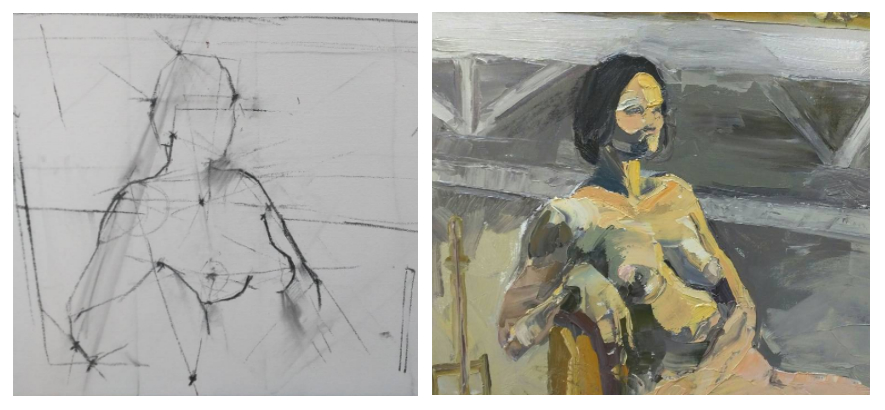Having a predefined baseline of security allows your mind to walk through the unknown.
CREATIVITY IN THE DESERT
The sandstorm started to quiet down. Still sitting cross legged, I opened my eyes and looked straight ahead: my goggles were as dusty as my lips. I got up and started walking slowly towards camp. Or where I thought camp was.
The last few days my mind had been ridiculously creative. Closing my eyes would conjure a stream of colorful images: not like a static gallery, but rather like a rollercoaster. Why? I had not taken any drugs. I hadn’t even sipped a drop of alcohol since I arrived. What had changed then? The answer arised like a whisper: the environment.
PAINTING LIKE THE MASTERS
I was in the Royal Hybernian Academy of Ireland. Our instructor Colin Davidson had been TIME’s front cover portrait painter of the year. His advise put succinctly the concept I’d been striving to live by: “I call my method freedom through control”.
A portrait must be accurate: eyes slightly too close, or a lip slightly too wide, and resemblance is lost. Yet a painting portrait does not aim to be like a photograph: how do you keep accuracy without losing freshness?
His advice was to find a few critical points like the chin, the eye sockets, the ears… that must stay in place. Then allow brushstrokes to roam freely for the rest. And correct course as you go. Keep those few critical points in place throughout the whole time.
ALL YOU NEED VS ALL YOU WANT
Every morning I brush my teeth, shower, meditate, journal. Every day I drink a hot coffee while reviewing my areas of focus, my moonshots, my relationships. Every evening I share a hot tea, I watch an inspiring documentary, I talk with my close relationships. These are simple actions I track diligently and they are a source of security, reliability, safety. It is an illusion of control, of course: I could have a serious accident any random day. But control is always an illusion. The question is how to satisfy this need without allowing it to take over our whole lives.
This predefined baseline assures my reptilian brain that I will be fed, I will have a place to rest fully, I will be safe and loved. It allows my pre-fontal cortex to walk into unknown territory with a sense of a fallback. Not from a place of desperation (which leads to unwise risks) but from a place of inspiration (which leads to openness and generosity).
The rest of the day? I have no idea what will happen. In fact, I aim to take actions that have high uncertainty – without risking my baseline. I don’t risk my key relationships, my core finances, my mental health, my bodily safety. I do risk rejection, judgement, failure, a wrong turn – things I can recover from without hurting my long-term wellbeing, which includes that of others.
JUST FOR ONE DAY
One day = one life.
THE RISK OF CONTROL
There is a line from Scott Belsky that resonates: “The danger of … planning is that you may end up living your life as planned. If you do, your potential cannot possibly exceed your expectations.” Instead you can ask yourself: what is the predefined baseline that would allow me to feel safe, loved, accomplished – whatever your basic psychological and physical needs may be – every day? What percentage of my time do they represent and therefore what percentage is left as “freedom”?
This lets me get outside my comfort zone without fear – and without recklessness – for what is there to fear? I already have what I need – and I nurture it, protect it, appreciate it daily. I will never have all I want – not for long, my mind will always want more. That’s what minds do.
In a long enough timeline, circling the area of control while embracing the rest as uncertainty leads to wonderful surprises (some lucky bets that win), to creativity (some inspired ideas among the many lousy ones) and to a more rich experience of life itself (moonshots that materialize).



Reply